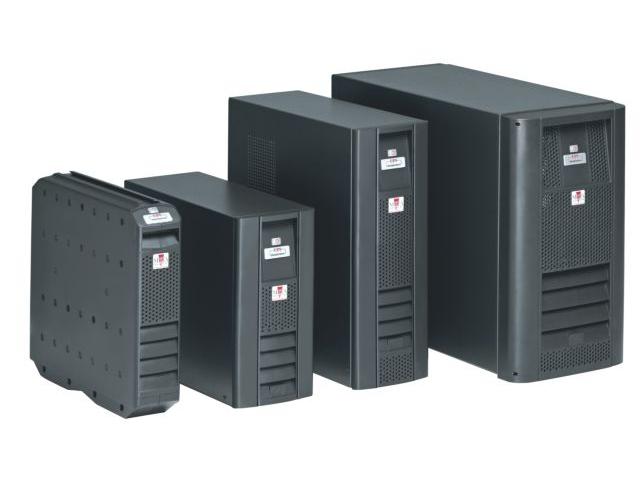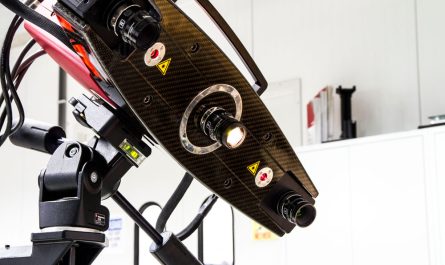What is a UPS?
A uninterruptible power supply, also known as a UPS, is a battery-powered backup system that provides uninterrupted power to computers and other electronic devices during power outages or fluctuations in power quality issues like surges, sags, and brownouts. A standard UPS has an AC input that is plugged directly into a standard wall outlet and an AC output that equipment like computers, routers, phones, etc. can plug into. It also contains rechargeable batteries and circuitry to detect power issues and instantly switch over to battery power until utility power returns or the battery is depleted.
How Does a UPS Work?
When utility power is flowing normally, The Uninterruptible Power Supply continuously charges its internal batteries while simultaneously powering connected equipment through its AC output. Inside the UPS, an AC-to-DC converter turns the incoming AC power into regulated DC power which charges the batteries and also produces an inverted AC output. If power issues occur, the UPS instantly switches to the internally stored battery power to ensure continuous operation without glitches or data loss. During an outage, the batteries provide backup power for a limited time, usually ranging from 5-30 minutes depending on the load and battery capacity. When power returns, the UPS automatically switches back to utility power.
UPS Components and Functions
The main components of a basic Uninterruptible Power Supply include its input and output connectors, batteries, and electronics for monitoring power quality and controlling the transfer between utility and battery modes. Key components and their functions include:
– Input connection – Accepts AC power from the wall outlet.
– Battery – Sealed lead-acid or lithium-ion batteries store backup power.
– Inverter – Converts stored DC battery power back to simulated AC power.
– Output connection – Provides uninterrupted AC power to connected devices.
– Monitoring circuitry – Constantly checks for power issues and triggers transfer.
– Automatic voltage regulation – Keeps output voltage within a tight range.
– Battery charge circuit – Maintains full charge on batteries when utility power is normal.
UPS Battery Types
Common types of UPS batteries include sealed lead-acid (SLA) and lithium-ion (Li-ion) batteries. SLA batteries are lower in cost but also heavier and require periodic replacement every 2-5 years. Li-ion batteries are more expensive up front but lighter, last significantly longer often 5-10 years, and do not have the memory effect that impacts SLA batteries. Some UPS models also offer hot-swappable batteries that allow changing a dead battery without powering down connected equipment.
UPS Power Ratings and Selection
A UPS is rated both by its maximum continuous output power rating in Watts or VA as well as its battery backup run time in minutes. The output Wattage rating indicates how many Watts of equipment loads it can reliably power continuously during short blackouts. Run time depends on the output load percentage as well as the battery capacity in VA hours. Selecting a UPS larger than the total load ensures uninterrupted protection during outages. Rack-mount and tower UPS models are also available for server rooms and networks.
UPS Operation Modes and Transfer Times
A UPS has three main operation modes – Online, Line Interactive, and Standby. Online double-conversion UPSs provide the highest power quality with near-zero transfer times by constantly feeding power conditioned by its inverter. Line Interactive UPSs pass power directly through but buffer against momentary distortions. Standby UPS models only switch to battery during complete loss of utility voltage with some brief interruption to connected equipment. Transfer times to battery vary depending on the UPS model and technology but are generally within 4-6 milliseconds or less for a full transfer.
Additional UPS Features
Beyond basic protection, many modern UPS models offer additional advanced features to enhance device uptime and data/equipment safety:
– Smart monitoring software – For remote management, alerts, and scheduling.
– SNMP/network cards – Enable integration into network management systems.
– ECO/energy saving mode – Boosts efficiency by bypassing inverter during normal power.
– Surge protection – Defends against damaging transient voltage surges.
– Cooling fans – Dissipate internally generated heat for lower equipment temperatures.
– Physical security features – Locking power cables and tamper-resistant designs.
– Environmental monitoring – Sensors track temperature, humidity and other factors.
– Generator compatibility – Seamless transfer between generator and utility power.
Summary
In conclusion, uninterruptible power supply provide essential protection against the risks posed by utility power problems and outages. By safeguarding electronics and ensuring continuous availability of critical systems, UPS units deliver protection for data, productivity, and peace of mind. Whether addressing power quality imperfections or complete power failures, selecting the right UPS solution tailored for specific equipment loads helps maximize uptime in any environment.




